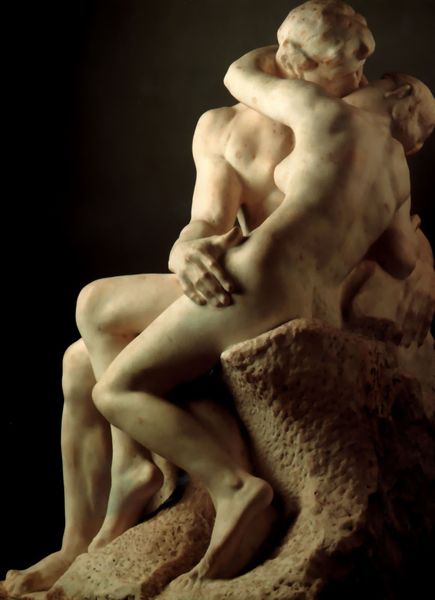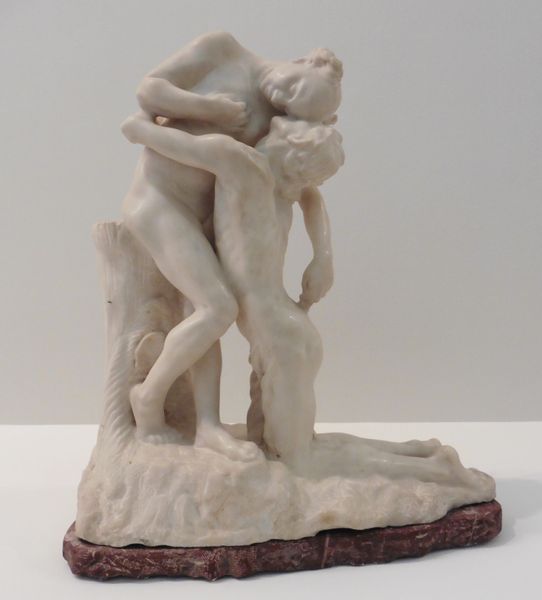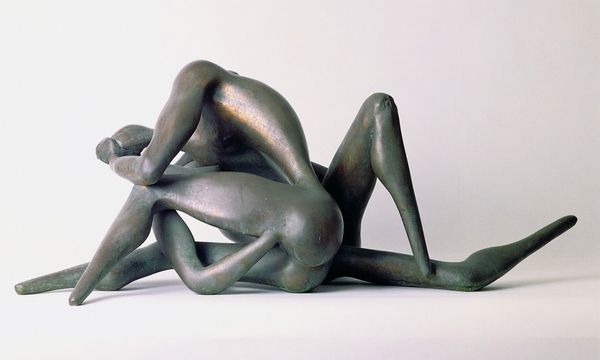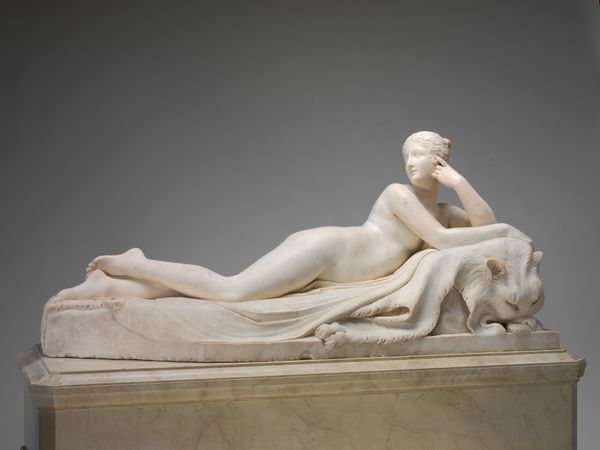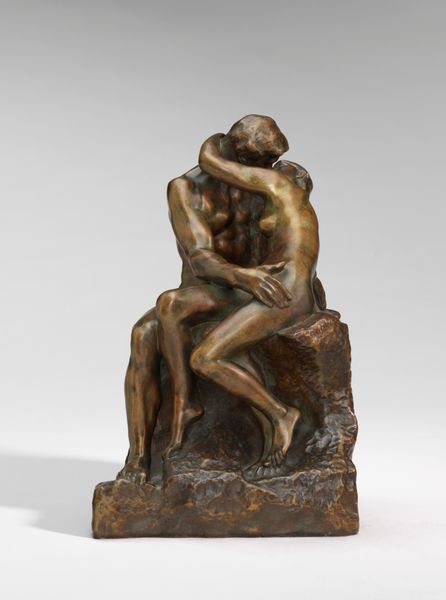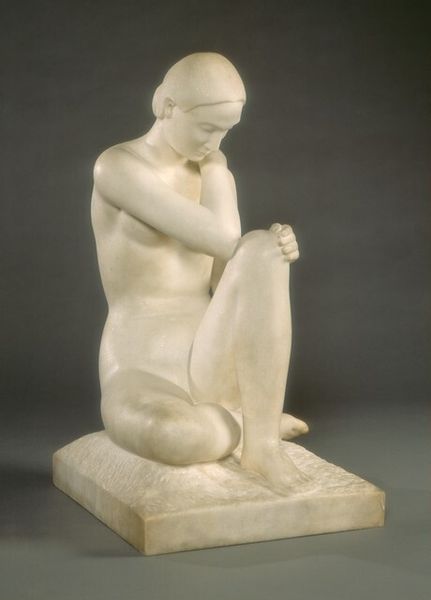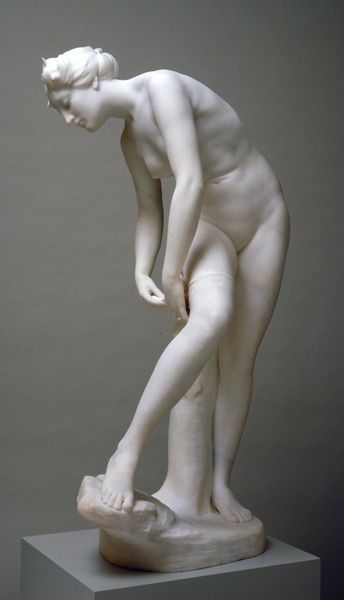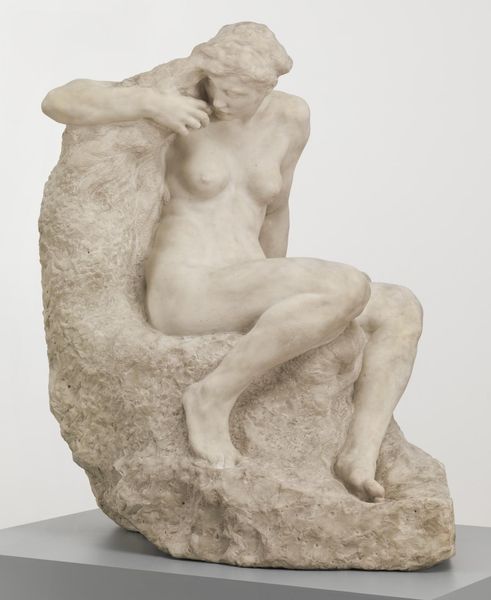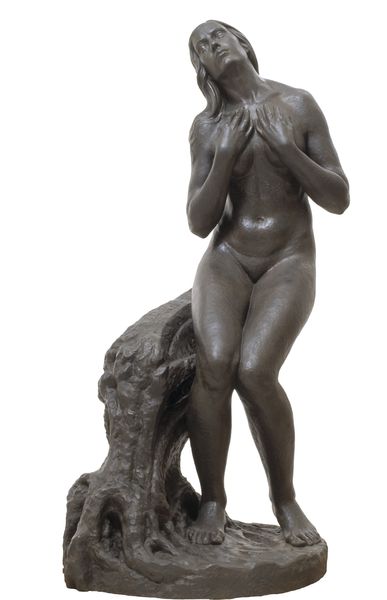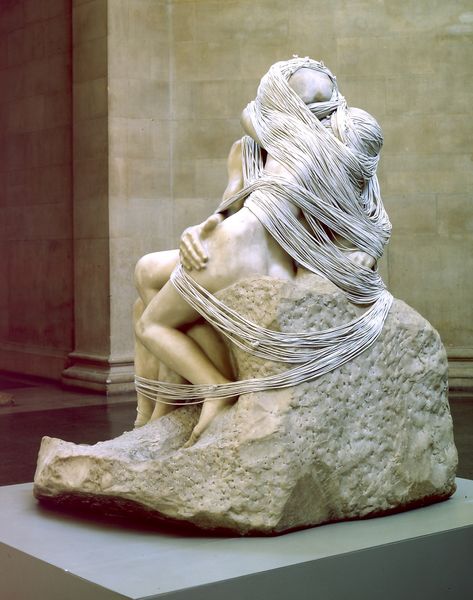
carving, sculpture, marble
#
statue
#
carving
#
classical-realism
#
sculptural image
#
figuration
#
sculpture
#
marble
#
nude
Copyright: Public domain
Editor: Here we have Aristide Maillol’s “La Mediterranee”, a marble sculpture. I'm immediately struck by the contrast between the smoothness of the figure and the rough-hewn base. What can you tell me about it? Curator: Considering a materialist perspective, I find myself focusing on the marble itself. Where did this marble come from? What was the process of quarrying and transporting it? And how did those conditions affect the labor involved in creating this form? The finish suggests a dialogue between mass production and individuality. Editor: That's a different way to look at it than I expected. I was more focused on the figure and its classical references. Does considering the material's origin shift how we see that classical connection? Curator: Absolutely. We have to acknowledge that the idealized form, so prevalent in classical art, relies on very real material extraction and the social dynamics inherent in that labor. This marble wasn't magically rendered into a beautiful form. How might the economic and social context in which the work was created shaped Maillol's artistic choices and its reception at the time? Editor: So, seeing it as more than just an object of beauty helps us understand the economic system that produced it and its place in society. That's fascinating. Curator: Precisely. By questioning the material realities behind "high art" like sculpture, we expose the connections to broader historical forces and production models that produced it. The interaction with materiality exposes ideological meanings. Editor: I never considered marble from that angle before! Thanks, I’ve definitely learned to see things differently. Curator: It is rewarding to reconsider aesthetic objects to understand our society's productive forces.
Comments
No comments
Be the first to comment and join the conversation on the ultimate creative platform.

